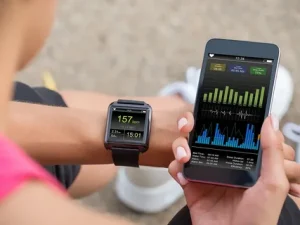Wearable Fitness Tracker Market Set for Remarkable Growth
The wearable fitness tracker market is on the cusp of significant expansion, with projections indicating a valuation rise from USD 30.92 billion in 2024 to USD 133.22 billion by 2034. This represents a compound annual growth rate (CAGR) of 15.7% during the forecast period.
Key Drivers of Market Growth
The surge in consumer awareness regarding personal health and wellness, coupled with technological advancements and increased integration with smartphones and digital ecosystems, has transformed wearable fitness trackers from basic step counters to sophisticated health companions. The demand for personalized health metrics, including heart rate, sleep patterns, oxygen saturation, and stress monitoring, is escalating among both athletes and everyday users.

Emerging Trends in the Global Market
- AI-Powered Analytics: Next-generation wearables focus on predictive analytics, identifying health anomalies and recommending real-time lifestyle changes.
- Integration with Telehealth: Fitness trackers are becoming vital tools for remote patient monitoring, enabling doctors to gather data beyond clinical settings.
- Focus on Mental Well-being: Devices are increasingly measuring stress levels and offering mindfulness tools like guided breathing and meditation sessions.
- Customizable Interfaces: Modular and adaptive user experiences allow consumers to personalize dashboards based on individual fitness goals.
Significant Developments in the Market
- The convergence of fitness and fashion is reshaping product design, leading to high-performance wearables that double as luxury accessories.
- Governments in countries like the U.S., Germany, and Japan are supporting the use of wearables in public health monitoring and insurance incentives.
- Collaborations between tech firms and fitness service providers are resulting in ecosystem-based fitness solutions.
- Advancements in biometric sensor technologies have improved accuracy and enabled continuous monitoring of blood pressure, ECG, and hydration levels.
Trends and Opportunities
- Corporate Wellness Programs: Businesses are investing in wearable tech to enhance employee wellness, reduce absenteeism, and improve productivity.
- Elderly Care Monitoring: Senior citizens are increasingly relying on trackers for fall detection, medication reminders, and round-the-clock monitoring.
- Battery Life & Durability: There’s a growing demand for wearables with longer battery life, waterproofing, and rugged durability for outdoor or adventure use.
Recent Developments
- Apple Inc. introduced new features in Apple Watch Series 9, including blood glucose trend forecasting and sleep apnea detection.
- Fitbit (Google) launched AI-driven wellness reports and real-time heart rhythm notifications across its premium devices.
- Garmin Ltd. expanded its Venu and Fenix lines with solar-powered batteries and extended athlete training metrics.
The market is characterized by rapid innovation, aggressive marketing, and the convergence of health, technology, and fashion. Key players are differentiating their offerings through unique features, proprietary health metrics, and seamless ecosystem integration. Major companies in this space include Apple Inc., Fitbit (owned by Google LLC), Samsung Electronics Co., Ltd., and Garmin Ltd.

